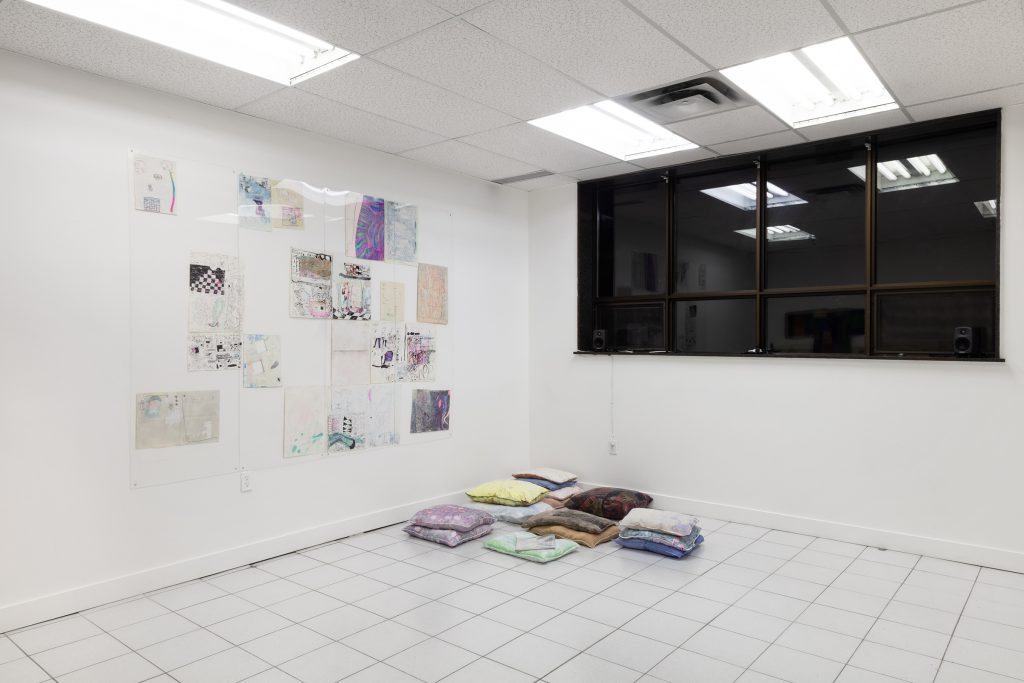
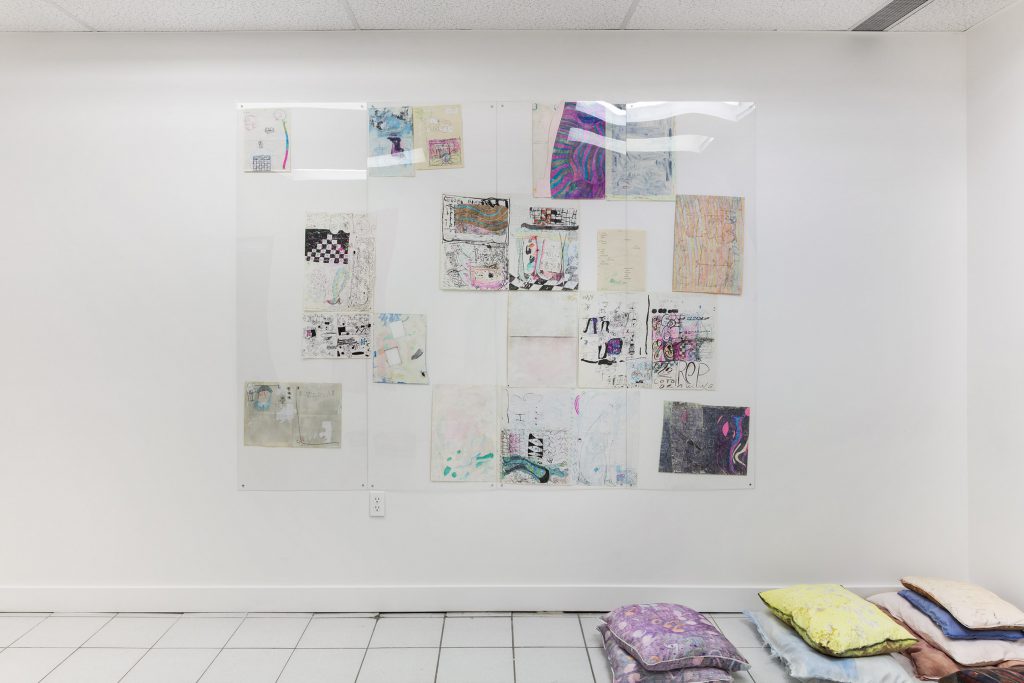

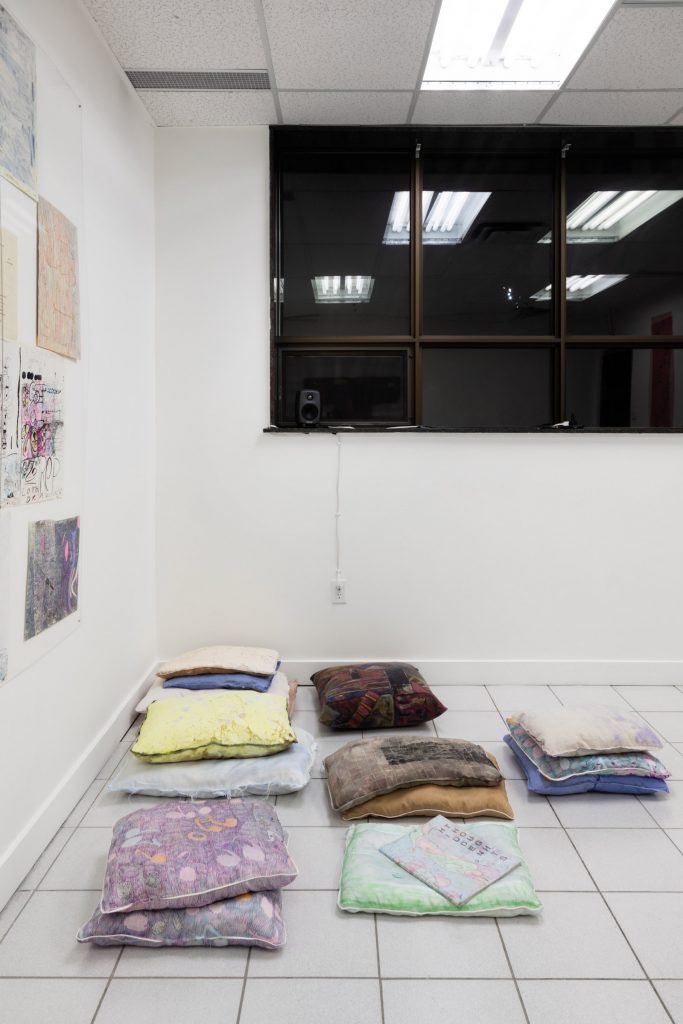
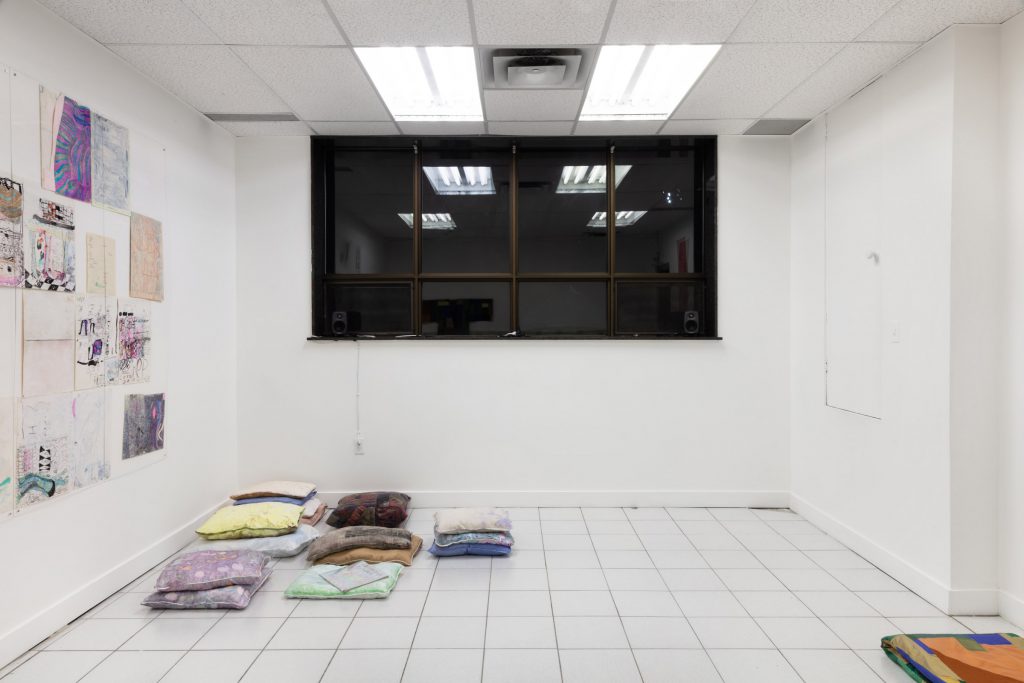
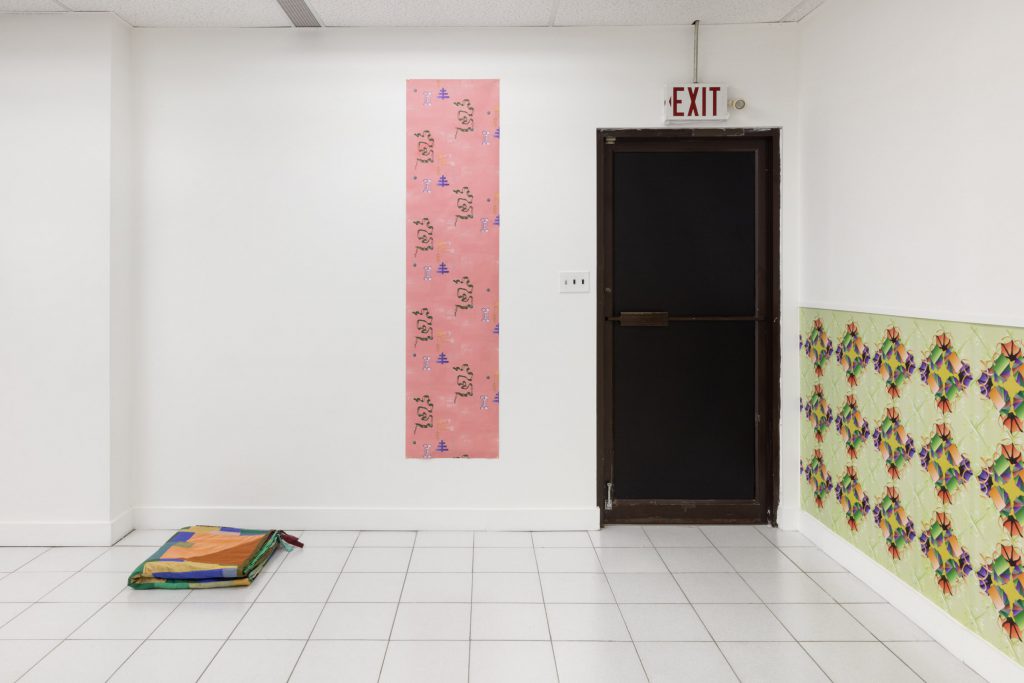

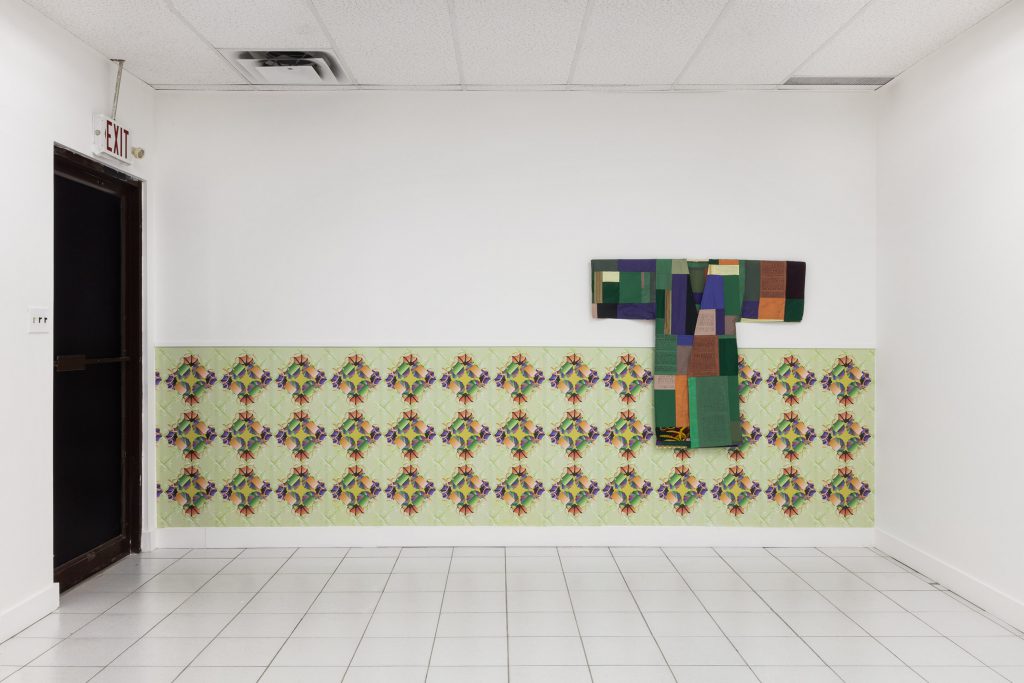
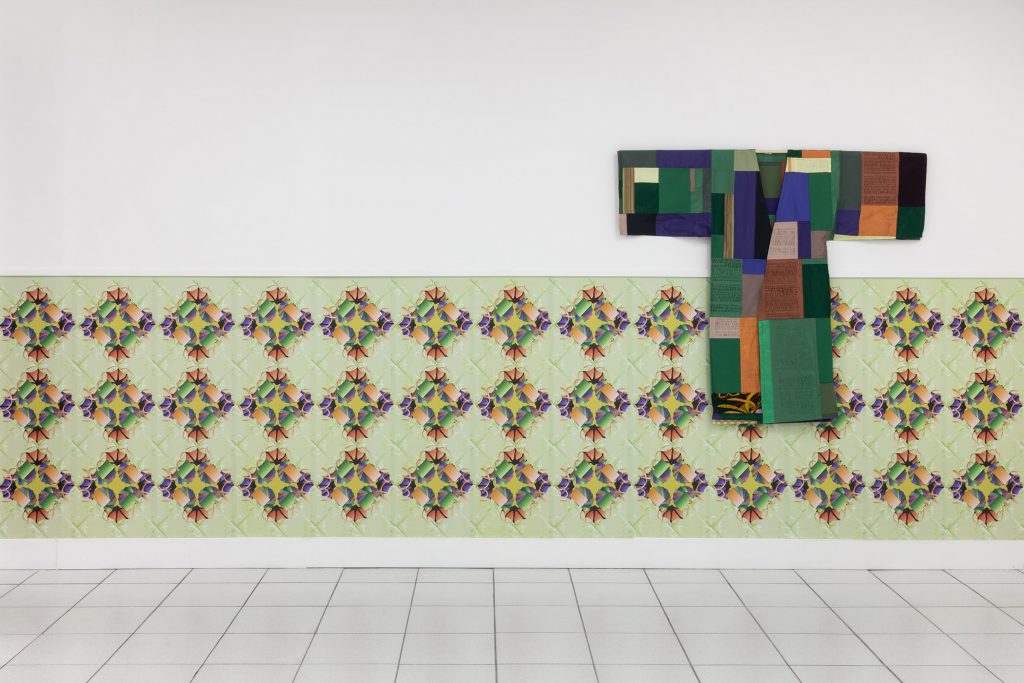
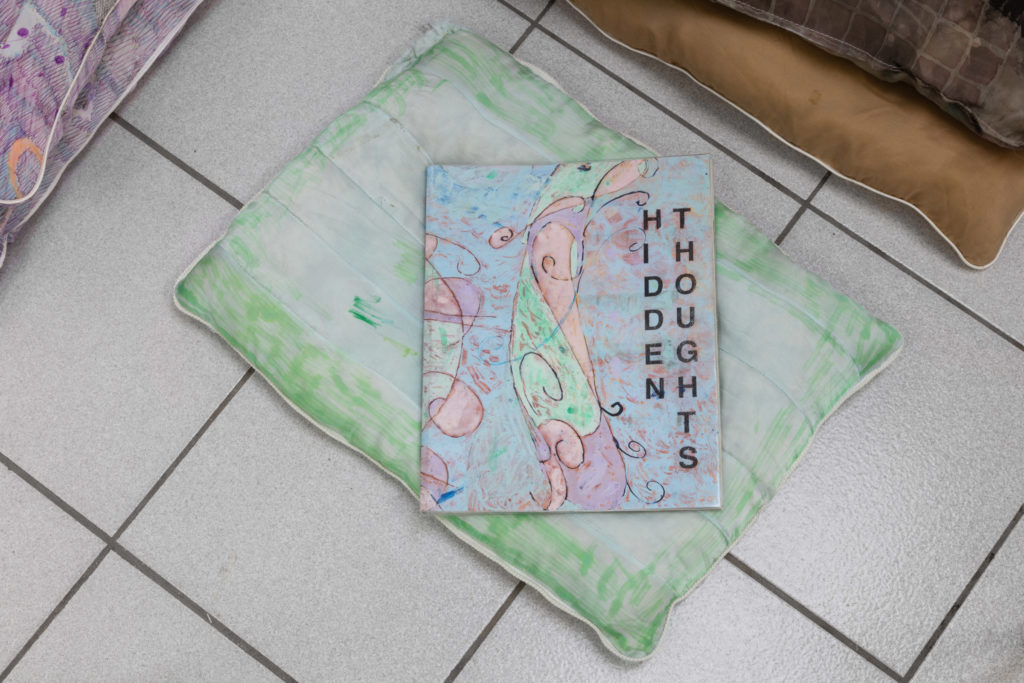
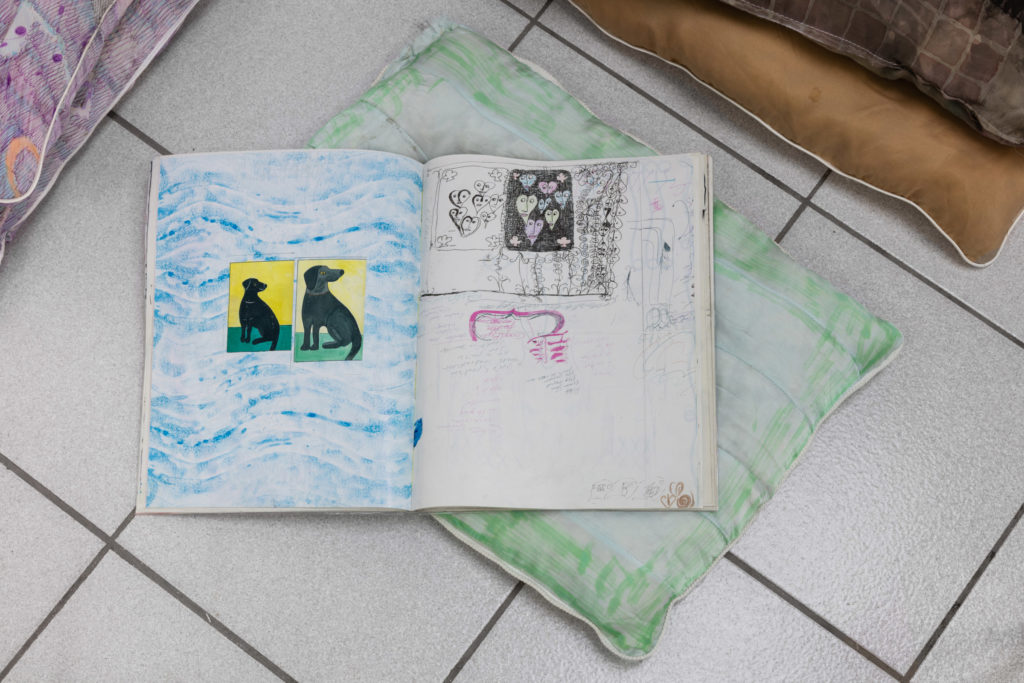
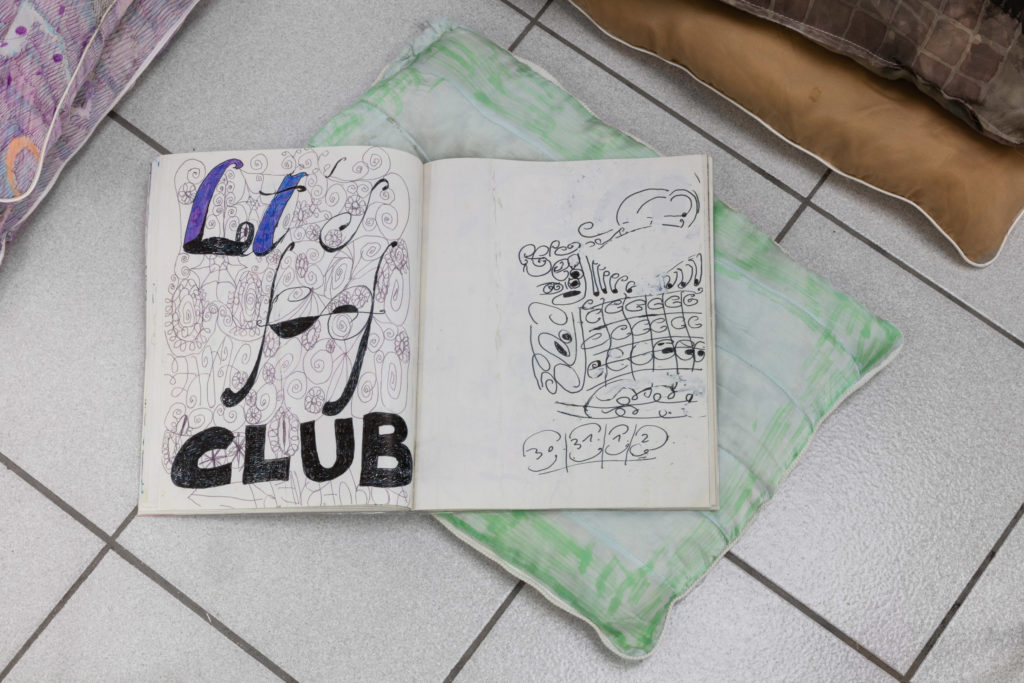

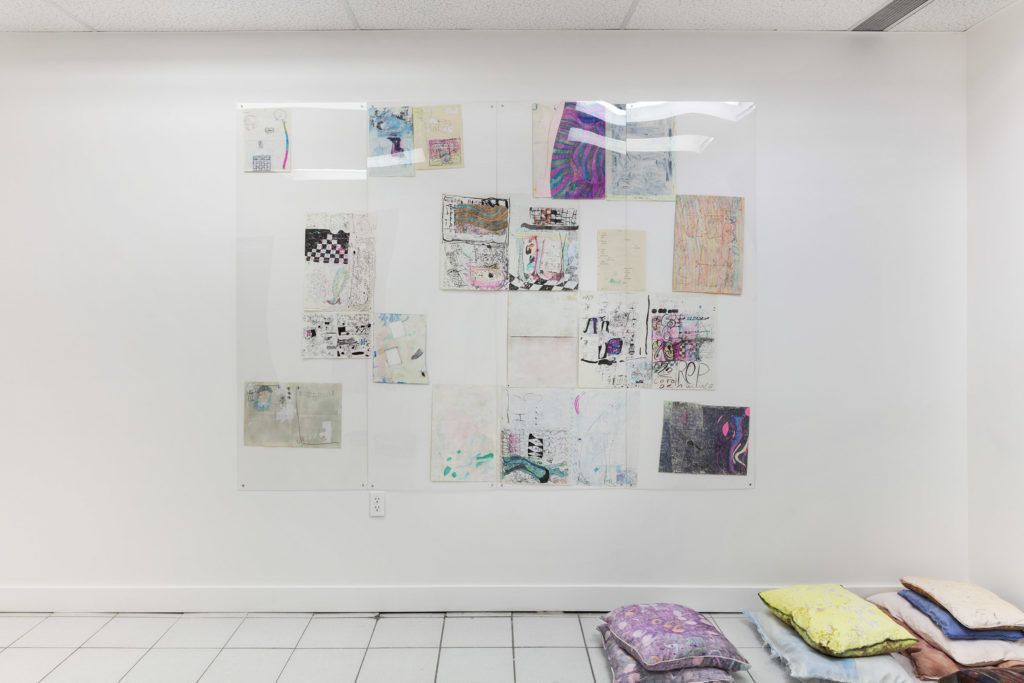
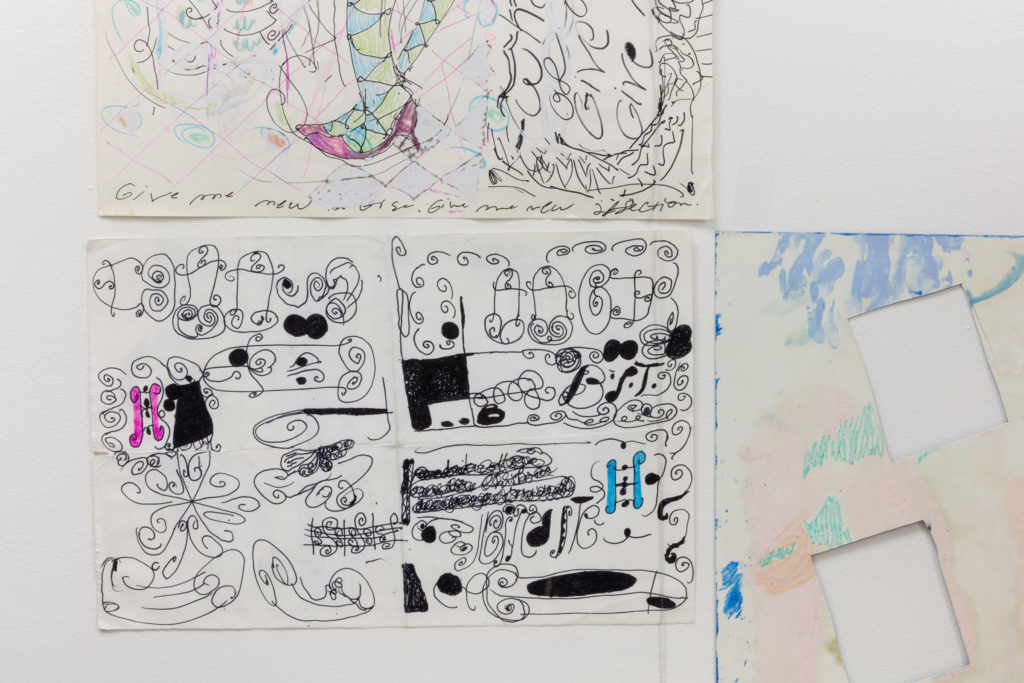
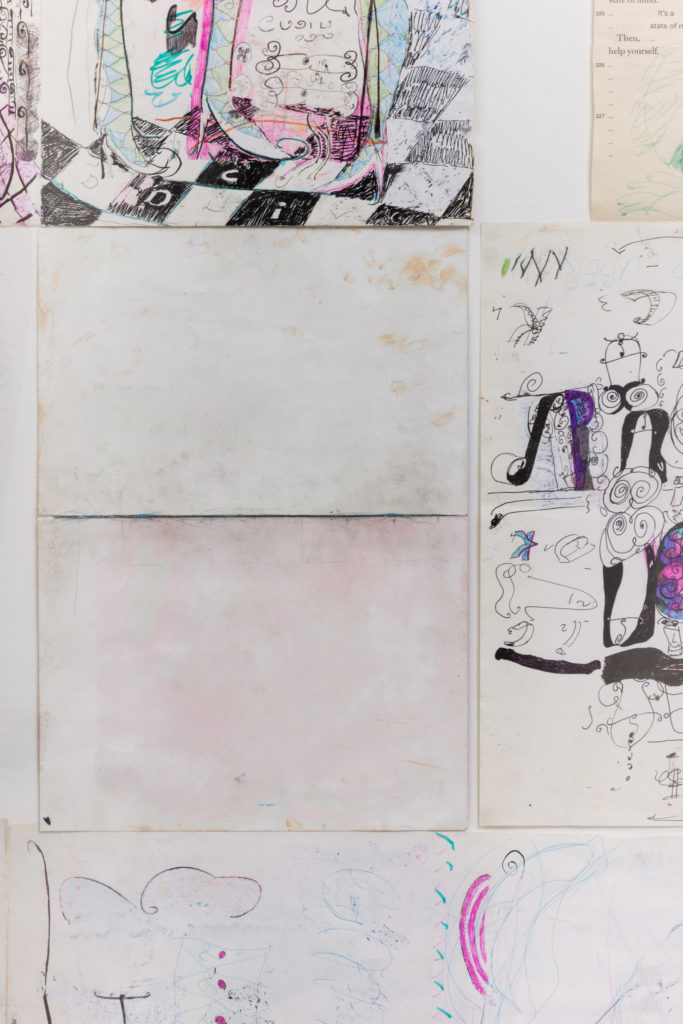

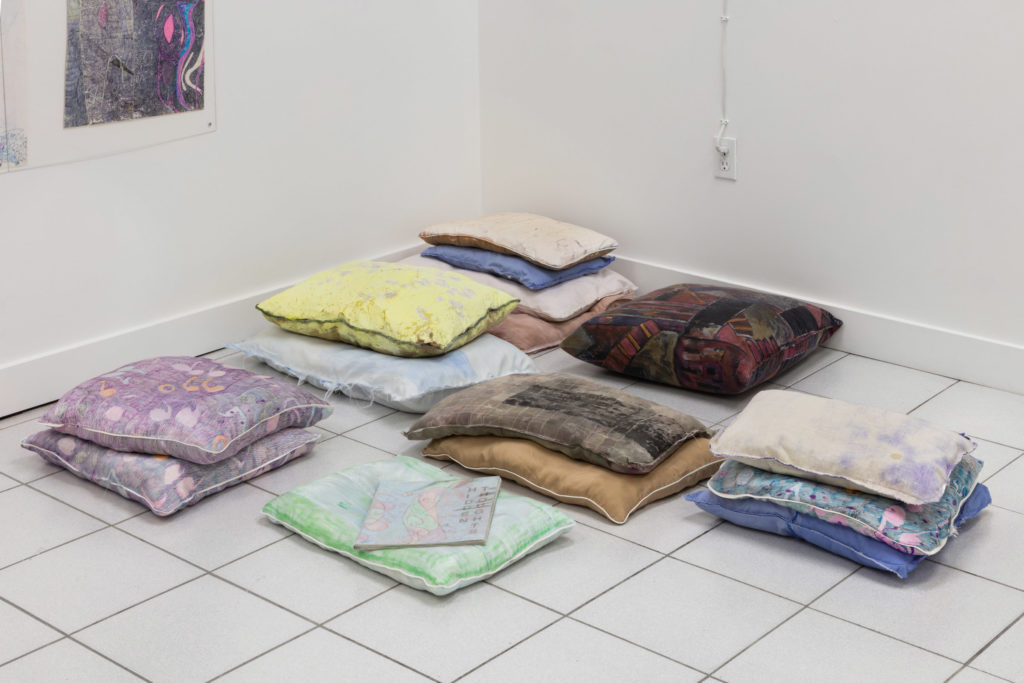
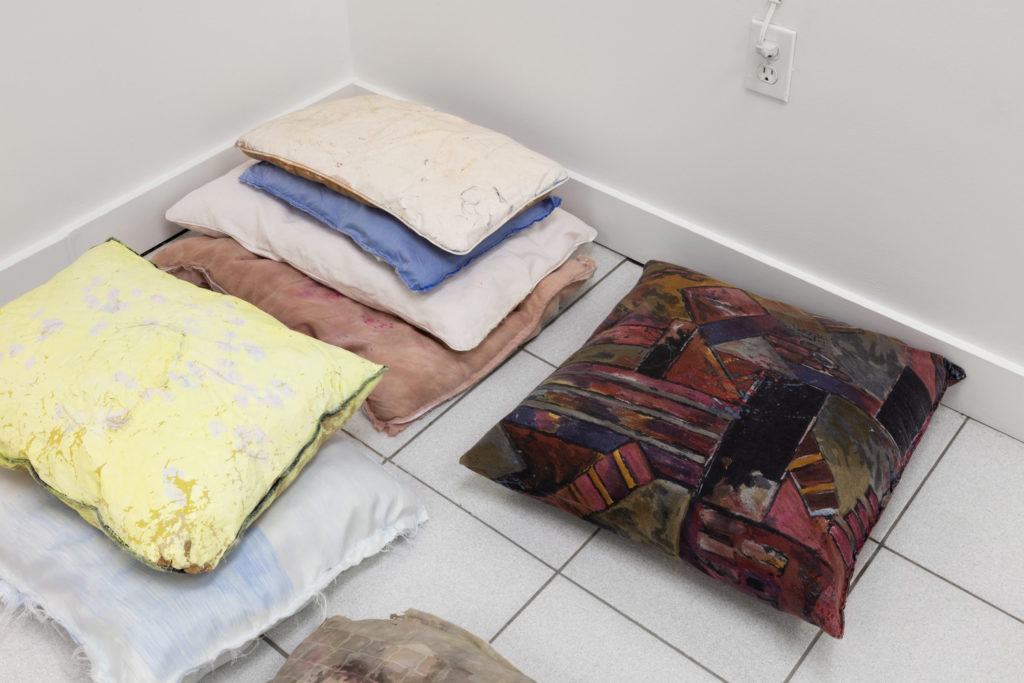
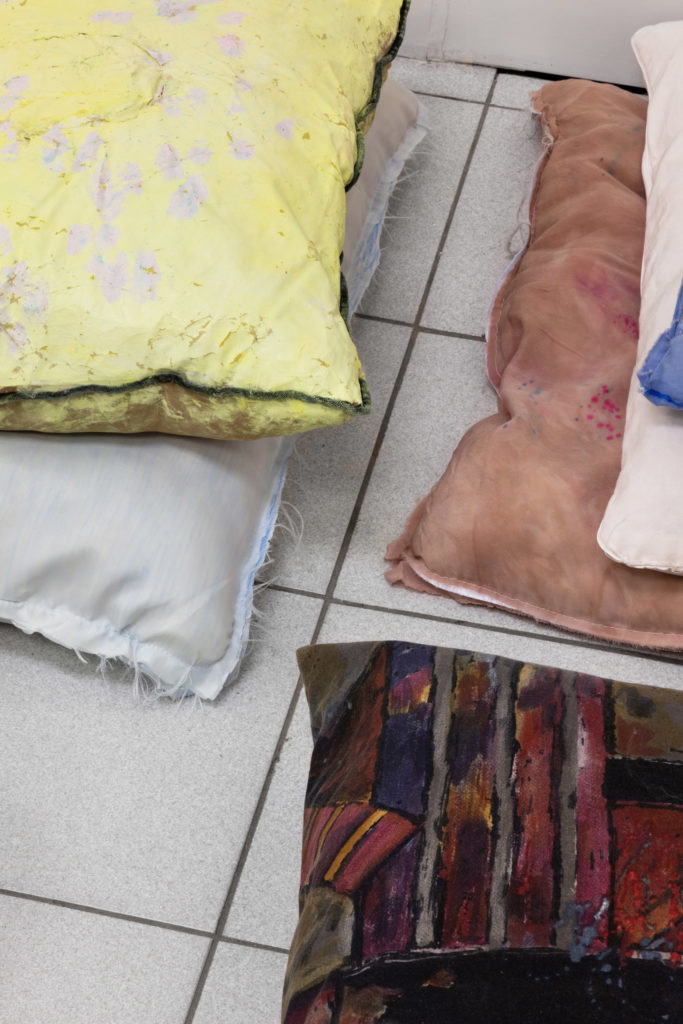
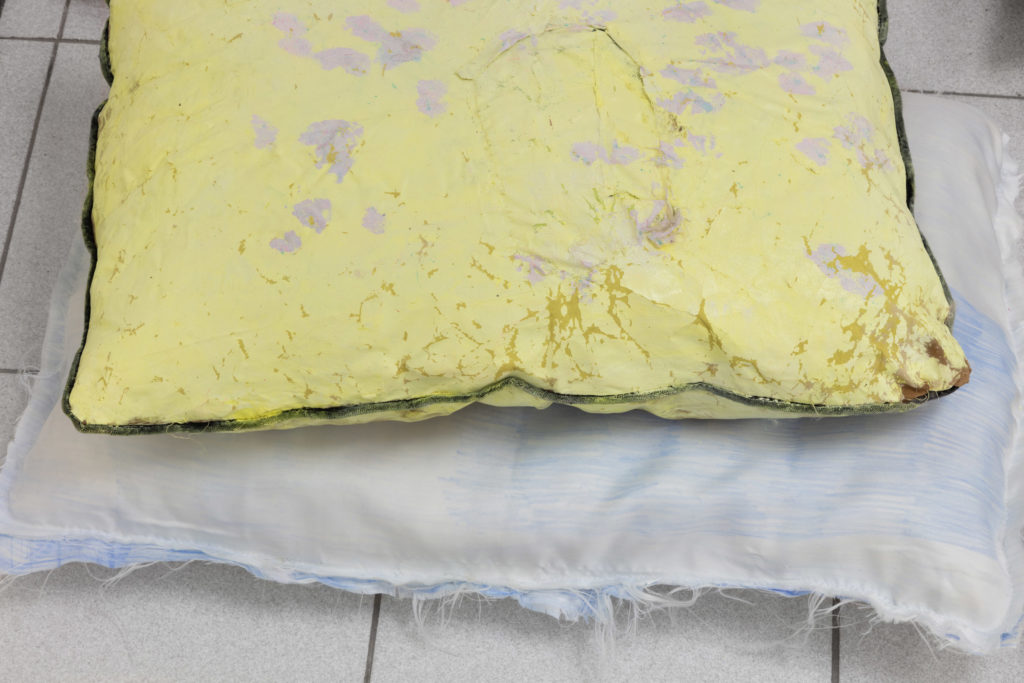
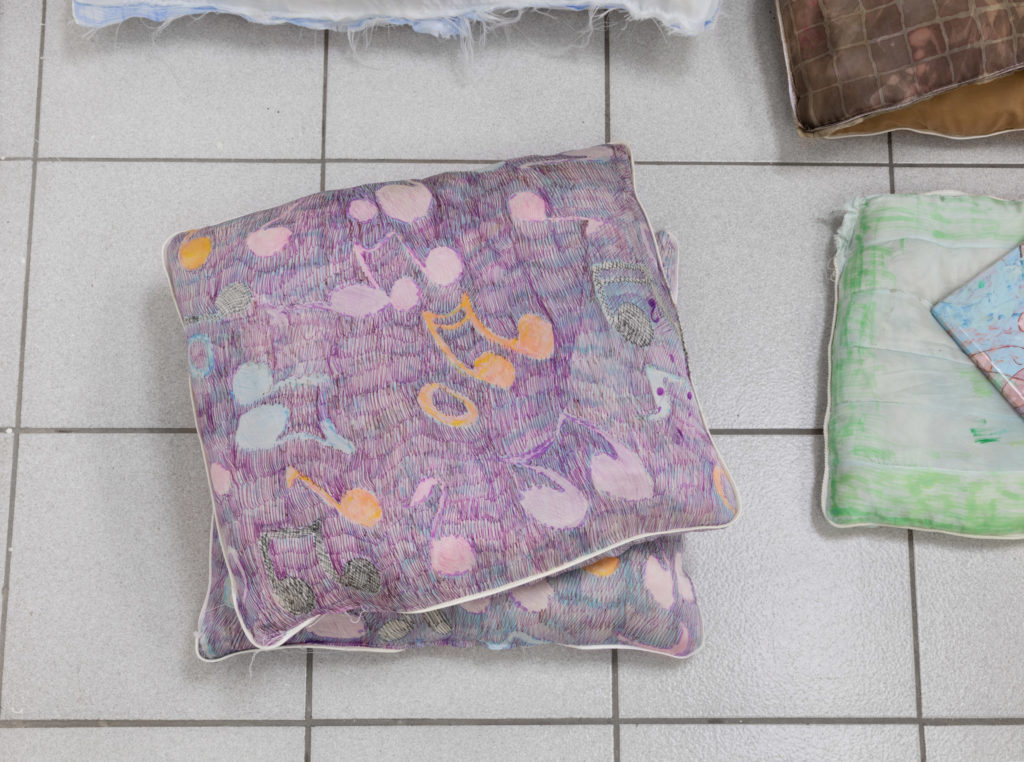
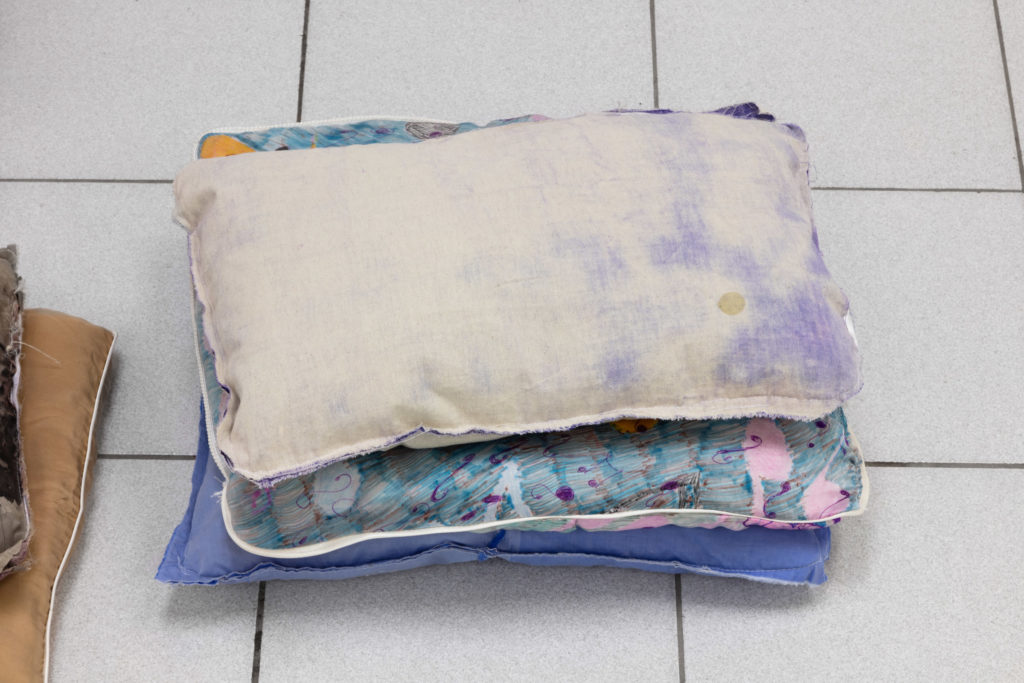
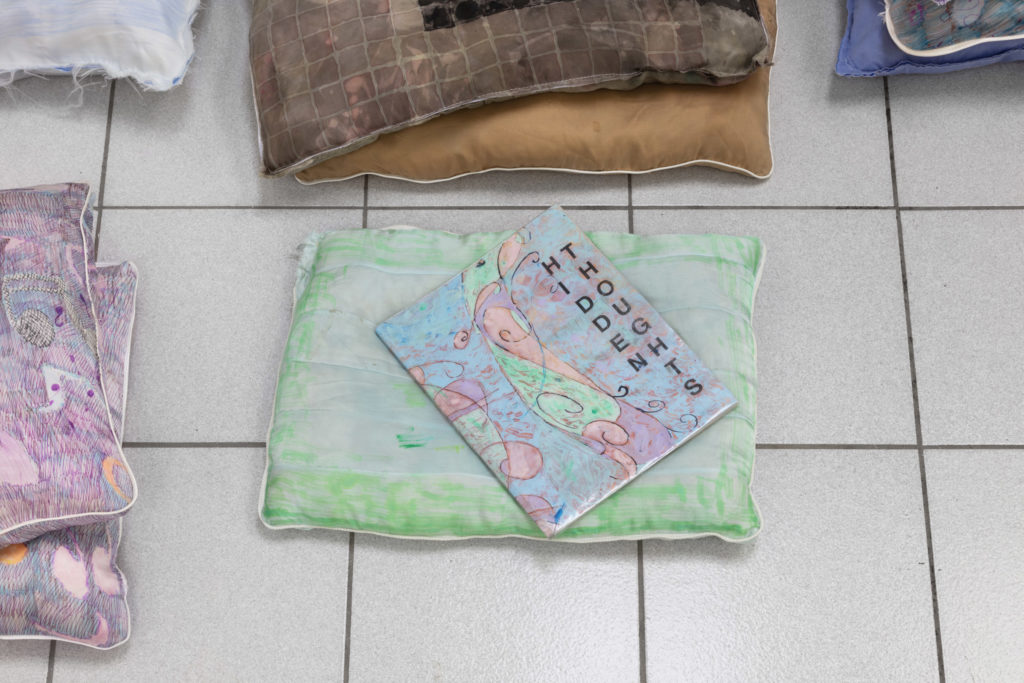
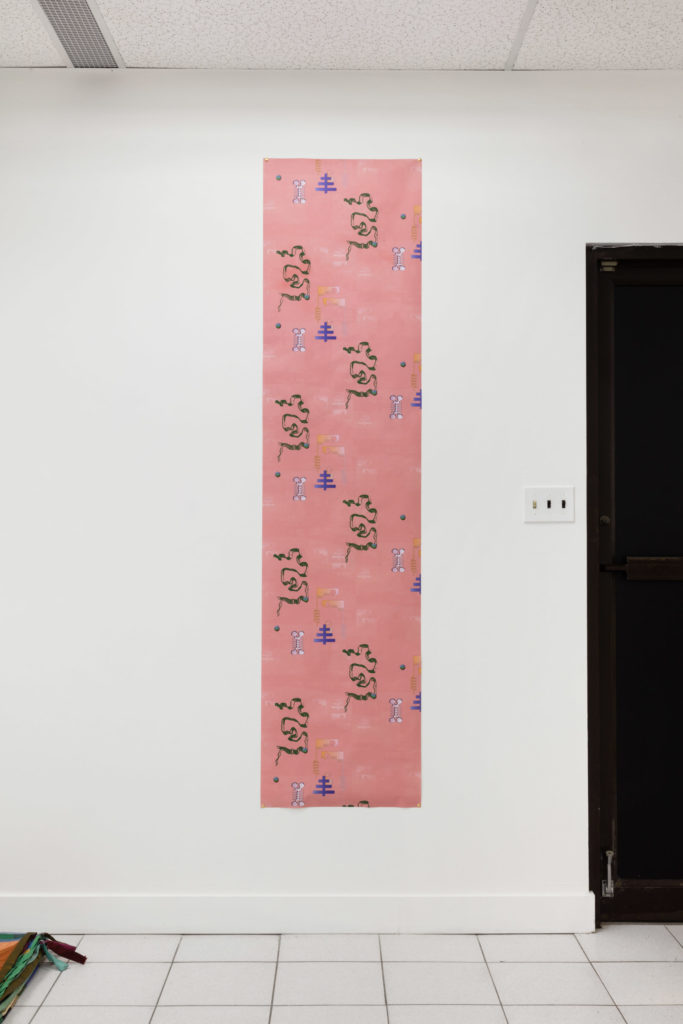


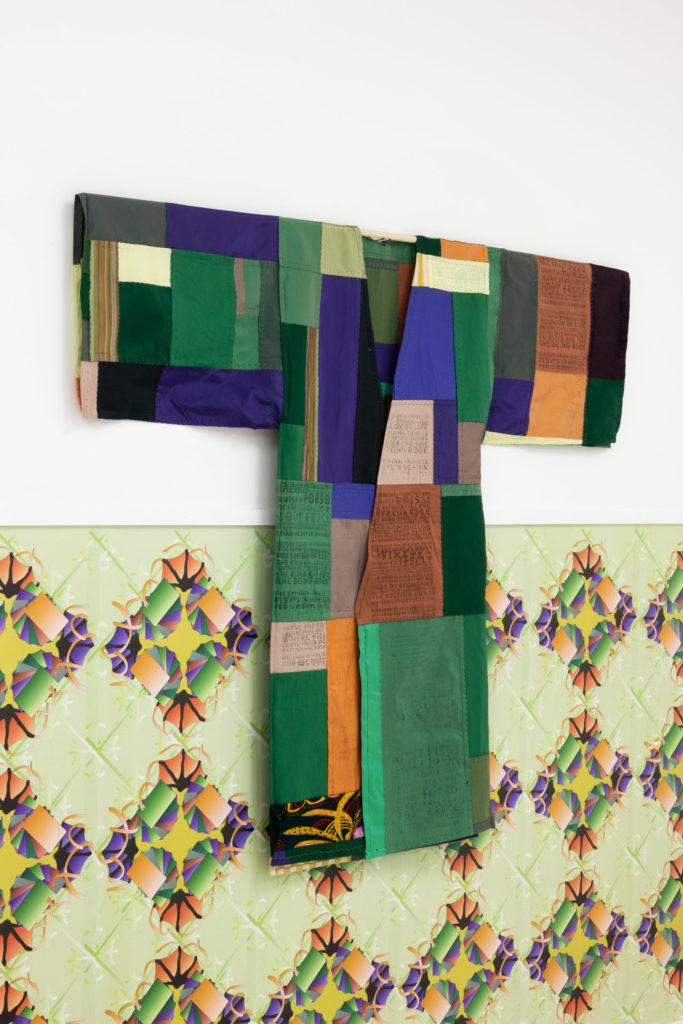
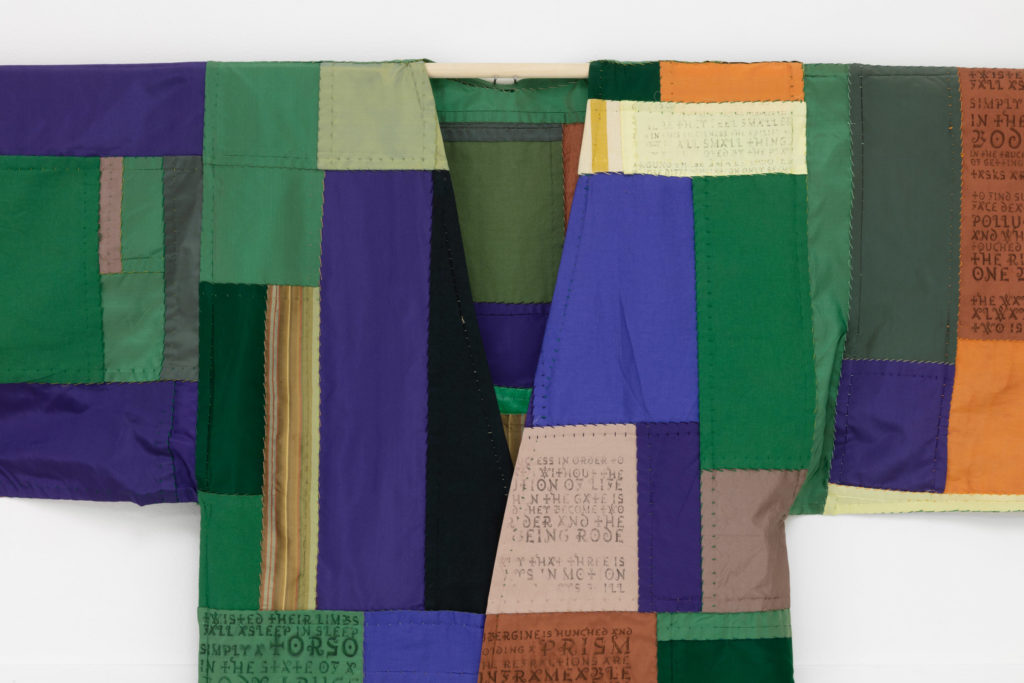
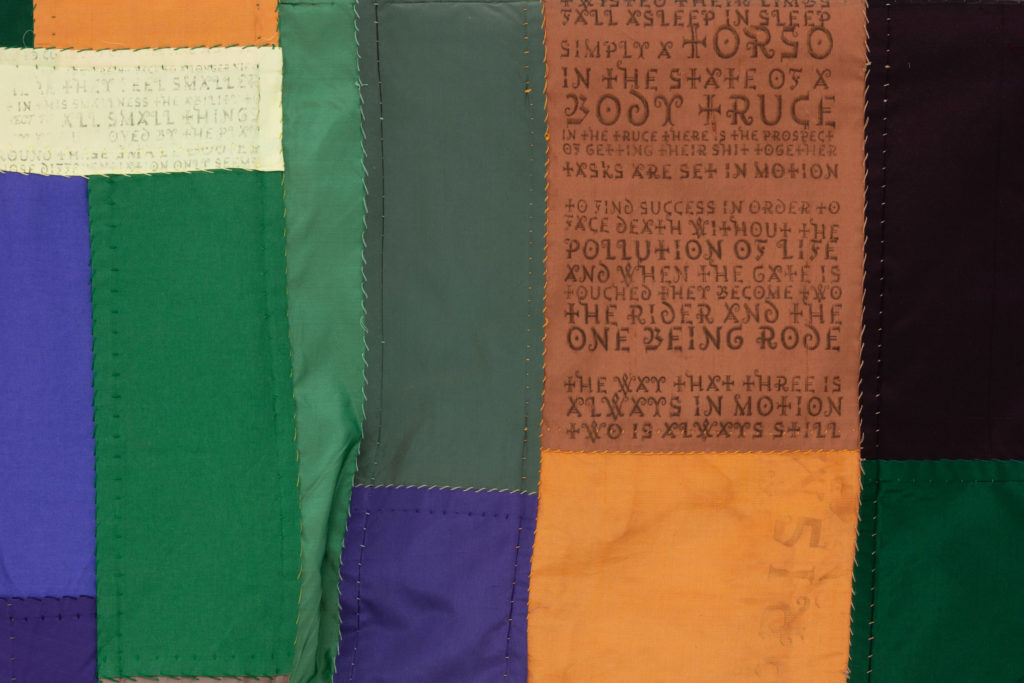
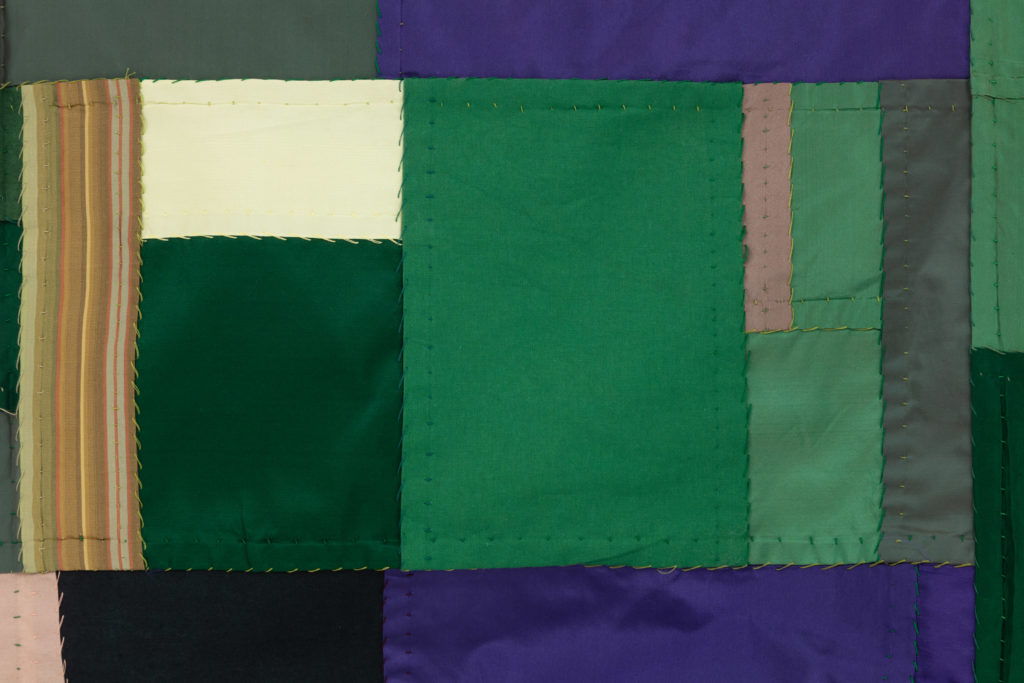
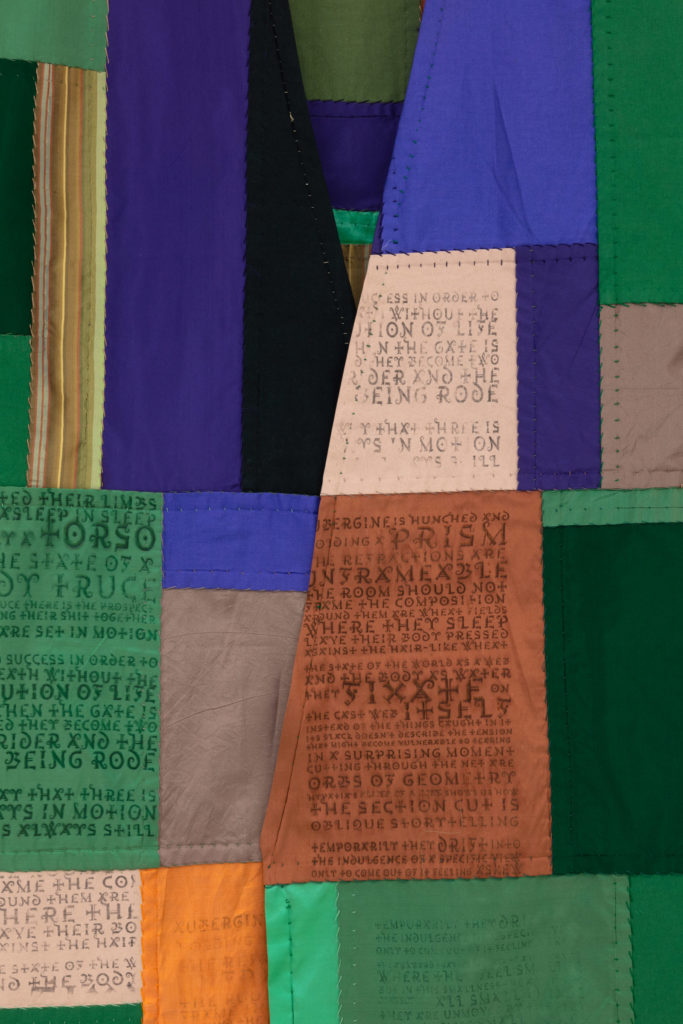
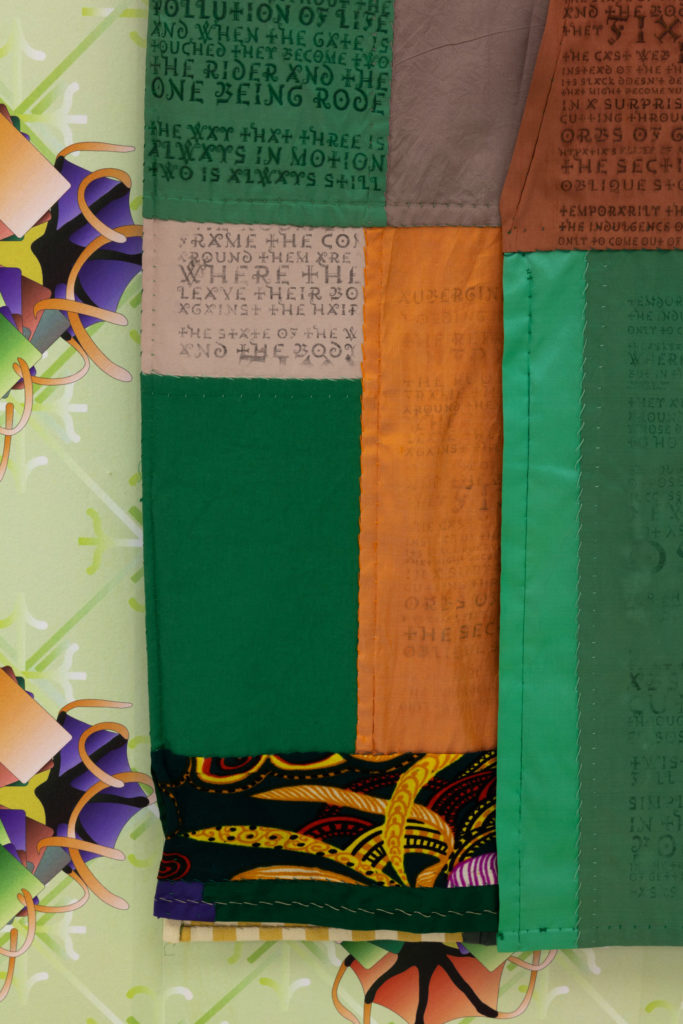
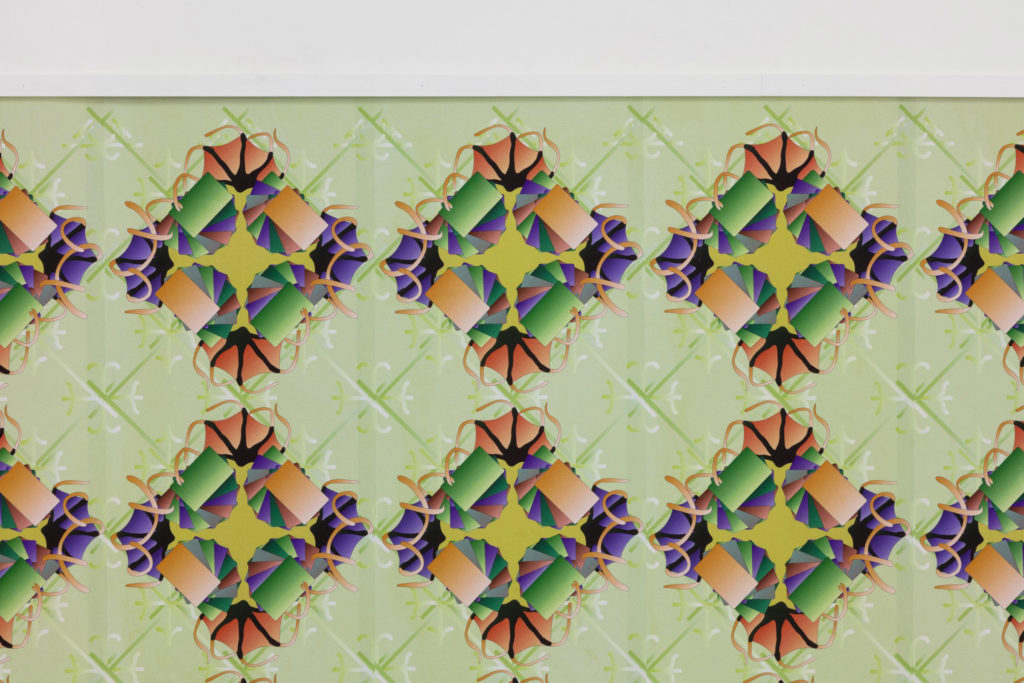

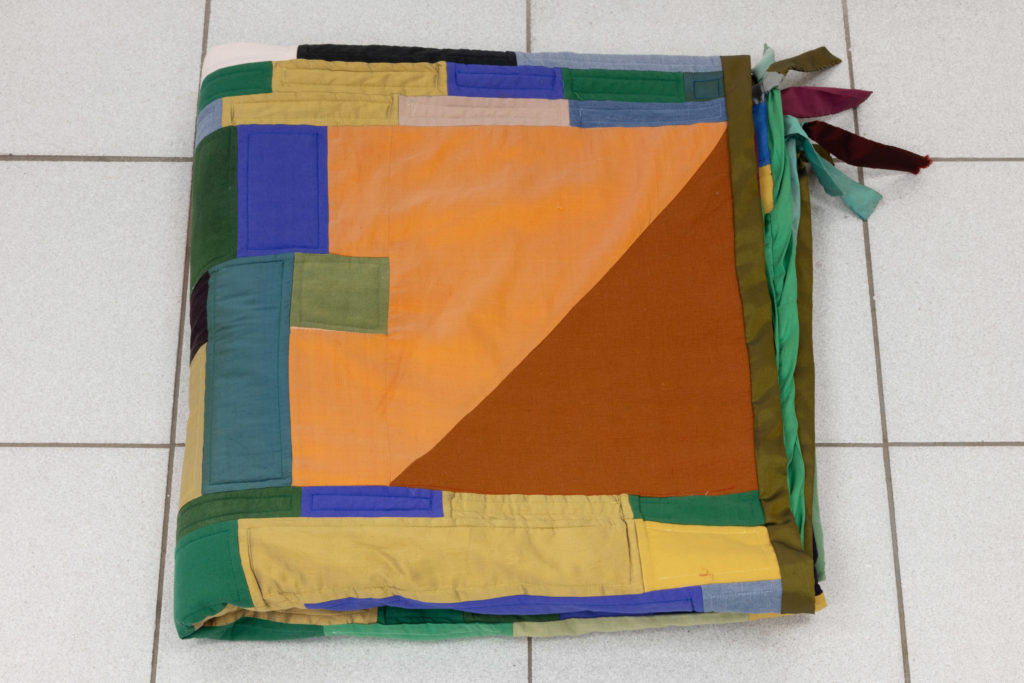
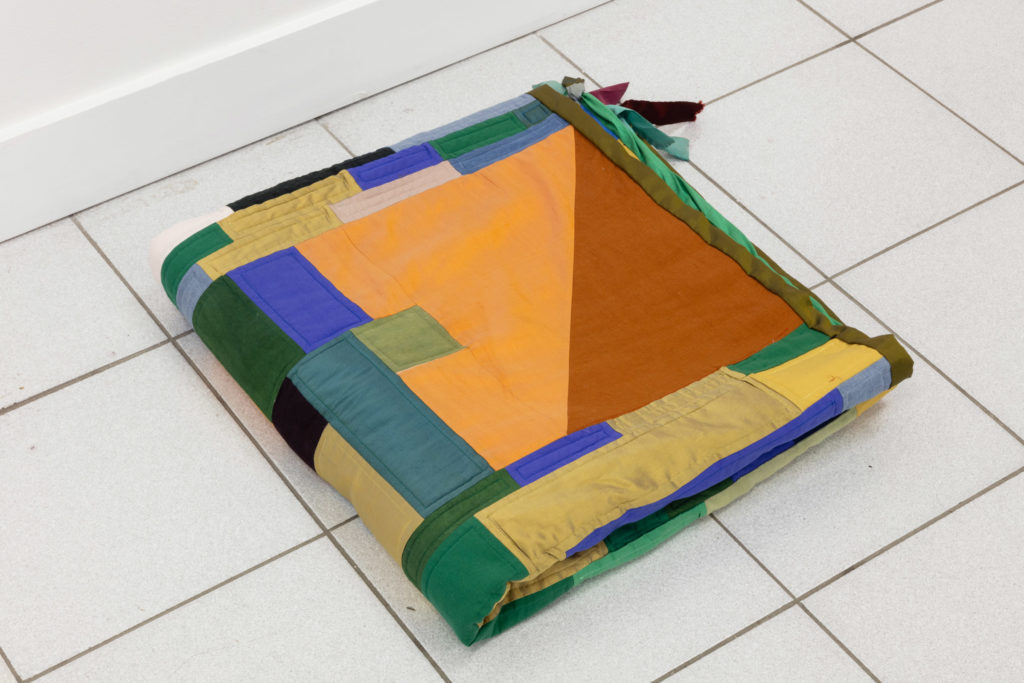

“H: you see the stylized outline of a ladder. This is the ladder writing climbs, the one that is important to me.
This is what writing is: I one language, I another language, and between the two, the line that makes them vibrate; writing forms a passageway between two shores.”
– Hélène Cixous, Three Steps on the Ladder of Writing
Dear H,
Can you believe that Cixous begins her book of theory with this proposition, with this kind of reading? I’m in total wonderment at how Cixous melts down the meaningfulness of language and builds it back up as its raw materiality, as brushstrokes on a page.
Anyway, and flirty poststructuralists aside, in being invited to write about your show I’ve been thinking a lot about the H. The H of Hou, Julian Hou, upon which H is propped the patronym, or more properly speaking the proper name. It’s an H that houses lineage: as much the arbitrariness of being born into a family as the necessity for shelter, shelter under the bar that connects two I’s, the I of myself and the I that I must recognize as the other. (The h, on the other hand, is much humbler, evoking the chair, a site of rest upon which the I slumps over, naked in its fatigue.) The house’s cross-hatched wallpaper—in which the H tessellates into X in rapid overlay—sets the vibe to an ornate groove, wiry & baroque. A folded quilt thrums on the floor of the house, interrupting—by its very flungness ‘pon the floor—the quilt’s easy associations with closure & mom’s laundries & the foregone warmth of last night’s sleep. Is it Mother whose whispery voice you hear, between the slamming of the door and the squeaking of the sole; or some other stranger, making mouth sounds as you wait in hiding upstairs?
And the H is no less the H of Anne Bourse’s H Club, a phantasmagoric rave space that belongs to her good friend Jean-Luc’s childhood. I can’t but quote you directly, Anne, for it’s your fantasy of the H Club that has the precision of impassioned imagination:
[Jean-Luc] had organized a club in the hen house of his parents’ house – he had named it the H Club, and people were really coming on the Saturday night to dance there, in the club of a twelve year old boy – It was named the H Club…
All nostalgia is nostalgia for somewhere we’ve never been, and nostalgia at its most potent is a transmissible substance, like a flu made from fantasy. Jean-Luc weaves between the stockinged legs of older women drawn to the novel safety of a club owned by a teen boy. The ravers who’ve come to roost at his coop spew curlicues of smoke that spread out into words not yet language, that impress upon him with sensation not yet sense. A delirium in the key of calico and a pillow upon which to sit, perchance to chat. Hypnagogic heart-cartoons all gone a-cooing in the French farmlands, twining around dancers’ fingers like seahorses in heat. The pungency of chickens & wine in one confined space. The magic of the H Club is the blooming spray of the fountain of youth, the half-remembered details like pressing hard upon closed eyes with the palm of your hand until the washes of colour come spinning through.
I’m invited by H Club & Hou to think domesticity and the rave in conjunct. At their best, they both achieve that hard-won feeling of being-at-home. I remember dancing in the Toronto lesbian bar The Hen House (rest in peace), sober as hell yet in an absolute communion with every raver in the room such that I, lifted from myself, became the line that vibrates between several I’s: not a subject but our ecstatic relating-to-the-world. I wear the robe, the kind of garment designed to envelop your body; and, so forgoing the distinction between torso and thigh, I become an emblem of the Ceremony: bathrobe (marking a body newly anointed in hygiene), monk (marking a body newly given to Spirit), officiant (marking two bodies newly joined in matrimony). Both home & party unpin us from the strictures of identity, granting us lines of escape spiralling out.
Cixous reads the “H” for its materiality as much as its meaning. Likewise, in Herni Michaux’s mescaline diaries, he wrote of discovering through psychedelic experience a mode of writing that’s more palpable than legible. Amidst all the bent geometric textures, scrawled across Cassandra Cassandra’s walls & cloths is this kind of writing that dissolves into line, wave, swirl, hex. It’s a writing aligned with the creak & hiss & uncanny comforts of childhood and childhood’s continued lingering. It’s a relief to be so released from meaning. It means I can kick my feet back, perchance relax. It feels like Home and nothing less.
Yours,
F
Text by Fan Wu for Solitaire with Anne Bourse and Julian Hou at Cassandra Cassandra
Anne Bourse (b. 1982, France) graduated from the École des Beaux-Arts de Lyon. She produces works in a range of mediums, including drawing, painting, and textile-based sculpture. Through these forms she blends a continuous shift back and forth between biographical fragments and references to art history. Her work has been shown at Parc Saint Léger (Pougues-les-Eaux) in 2015; at Mains d’OEuvres (Saint-Ouen) and the Centre International d’Art et du Paysage (Vassivière) in 2016; at the Florence Loewy Gallery (Paris) in 2017; at Marcelle Alix (Paris) in 2018; and most recently in 2019 at Pauline Perplexe (Arcueil), La Plage (Paris), Fondation Ricard (Paris) and the CAC (Brétigny). She will participate in a group show at Palais de Tokyo (Paris) in October 2019. Anne Bourse lives and works in Paris.
Julian Hou’s practice involves the development of audio fictions that integrate music with spoken language, hand made costume and printed clothing, as well as pattern-based digital collages rooted in drawing and design. Evoking affective states, mis-memory, magic, threshold consciousness and thought-forms, his works are assembled into installations that engage psychophysiological experiences of the body and its extension into clothing and architectural interiors. Julian Hou has recently held solo exhibitions at Unit 17, Vancouver (2018), Soon.tw, Montreal (2018), Artspeak, Vancouver (2017); 8eleven, Toronto (2017); L’escalier, Montreal (2015); CSA space, Vancouver (2014). He has participated in group exhibitions and performances at the Vancouver Art Gallery (2016-2017); Things that can happen, Hong Kong (2017); Damien and the Love Guru, Brussels (2017); Kamias Triennale, Manila (2017); Spareroom, Vancouver (2017); 221a @ Occidental Temporary, Paris (2016); Audain gallery, Vancouver (2015); the Apartment, Vancouver (2015). He has participated in residencies at 221A (2017), Western Front (2018), and Triangle, France (2019). Julian Hou (b. 1980, Canada) lives and works in unceded Coast Salish territories (Vancouver).
